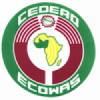Import and export
|
The regional trade policy is developed along the lines of boosting exports to member states as well as to the rest of the world. Imports into the region are therefore seen as complementary to the exports of goods and services.
External trade of ECOWAS is dominated by a number of products and generates local value added due to the preponderance of fuels coming from extractive industries. These represent three-quarters (75%) of exports (excluding re-exports) and are provided mainly by Nigeria (73%). Cocoa and cocoa food preparations (5% of exports) , precious stones (3%) and secondarily cotton , edible fruit, rubber , plastics , wood and wood products , fish and shellfish (about 1% each), form together with fuel , the major export products of the West African Economic Community. Europe accounts for about 28% of ECOWAS exports with 23% for the European Union. The Americas account for 40 %, 34 % for the Free Trade Association of North America (NAFTA) 24 involving the United States, Canada and Mexico. Trade openness fostered by the development of South-South trade shows substantial breakthrough of Asian Countries and those of Oceania, capturing 16% of exports, with 0.3% for the near and Middle East. These exports are dominated by Nigeria and Ivory Coast that carry between them, 87% of these transactions. Nigeria provides 77% of regional exports and Côte d’Ivoire 10%. For their part, Ghana and Senegal are placed third and fourth with 4% and 2% respectively. Mali following the traditional leaders with 1.7% of regional exports. Five Countries (Benin, Burkina Faso, Guinea, Niger and Togo) carry each 1% of regional exports. As for regional imports, they are dominated by about ten products. Fuels still hold a leading position in this list. They represent 24% of total imports. They are followed by motor vehicles, tractors, cycles and other vehicles (2nd place), machinery , mechanical appliances and boilers (3rd), machinery and electrical appliances (4th), cereals (5th) , plastics (6th), works in iron, iron and steel (7th), iron, cast iron, steel (8th) , pharmaceuticals (9th) and fish and seafood (10th). As for the exports, Nigeria appears here also in a dominant position by making alone 41% of transactions against 18 % in Ghana, 10% each for Senegal and Côte d’Ivoire. Nigeria and Ghana together perform 59 % of the Community imports against 36% for the eight Countries of the West African Economic and Monetary Union (WAEMU). The other five Countries of the ECOWAS Member States realize only 5 % of the Community imports. To some extent, trade in Services which ought to promote growth in West Africa is hampered by institutional, regulatory and infrastructural constraints. In addition to the lack of visibility and data for the potential of the service sector at the regional level, various other internal and external constraints are undermining its competitiveness. Among the internal constraints are fiscal pressure, development of the informal sector, difficulty of access to credit and inadequacy of the financing mechanisms for the export of services, poor quality of performance (poor compliance with ISO Quality Assurance Standards 9001 2000 Version), energy deficit, lack of transparency and good governance, execution of a substantial part of public contracts by foreign companies in many countries, inadequacy of service infrastructure, high cost of trade transactions (factors of production, administrative bottlenecks), etc. Efforts are currently on to ensure that there is no longer a lack of information on foreign markets, obstacles to free movement, mutual recognition of qualifications and diplomas, relatively high costs of the establishment of businesses abroad and the situation of land-locked countries, among others. |
|
Trade Regional Statistics Regional exports to third countries by detailed product values (US Dollar) |



